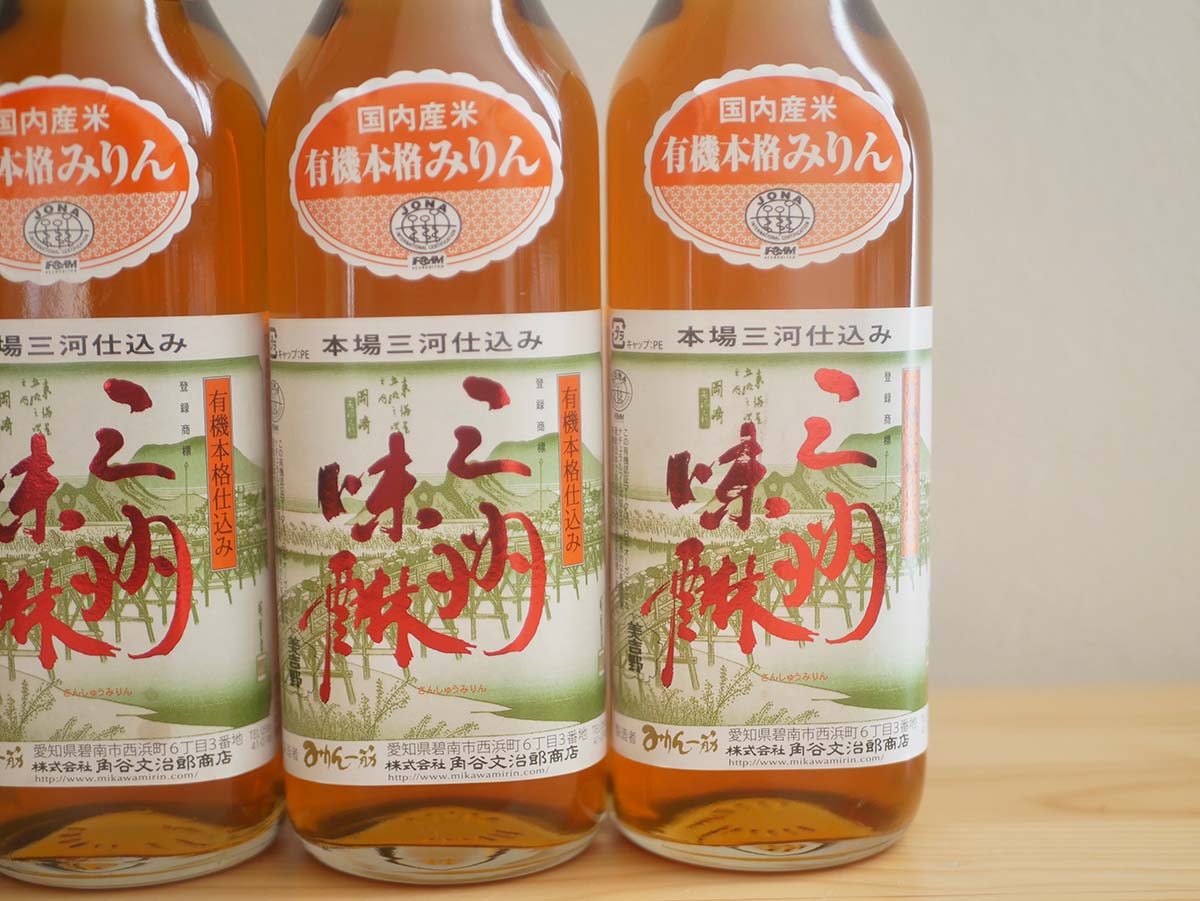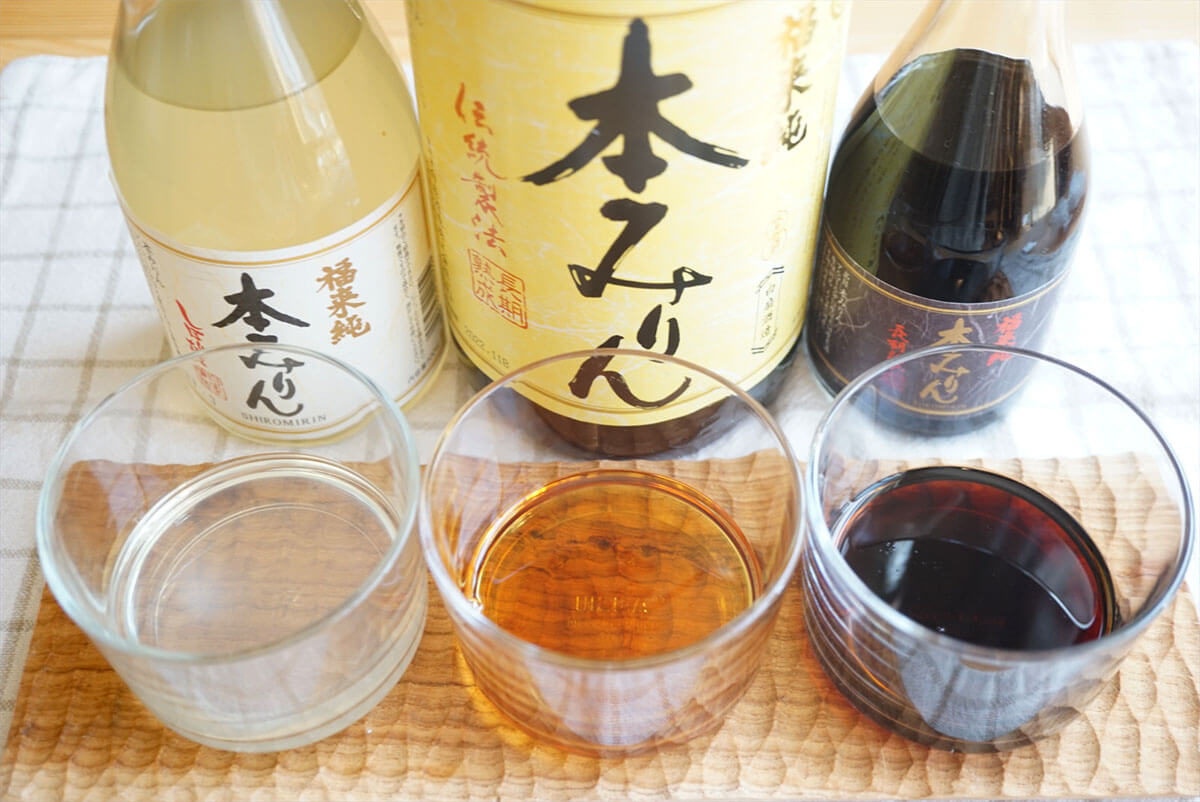Types of Mirin
Last October, American food professionals visited fermented food producers to deepen their knowledge of Japanese fermentation culture during the “Hakko Tourism in Japan” tour campaign. As part of the tour, organizers held a tasting session where guests gave candid advice from the perspective of the American market to food product manufacturers looking to enter the United States market.
I am introducing the traditional Japanese seasoning hon-mirin. “Hon” means “real” in Japanese. I hope this article will help you become interested in hon-mirin.
In the previous article, I provided a brief explanation about hon-mirin, but there are several types of what we call “mirin”. In this article, I am going to explain more about the different types of mirin.
What is hon-mirin, anyway?
Here is a recap!
Traditional hon-mirin is made from sticky rice, rice-koji, and shochu (or alcohol), and is made by saccharification and maturation over a long period of time (for about two to three years). It is one of the most important seasonings for Japanese dishes, as it provides a luster and an elegant sweetness and makes the dishes taste much better.
What you may not know is that what is commonly called and recognized as “mirin” in Japan is actually more than just the traditionally made hon-mirin. “Mirin” consists of three main types:
1) Hon-mirin
2) Fermented seasoning
3) Mirin-like seasoning

What is commonly known as mirin
1. Hon-mirin
Hon-mirin is made by saccharifying and maturing sticky rice, rice-koji, and shochu. The saccharification fermentation process, different from yeast fermentation used to make sake, uses the power of koji mold enzymes. With an alcohol content of about 14%, hon-mirin can be drunk as a sweet alcoholic beverage. In the past, it was enjoyed by the upper class as a sweet and luxurious liquor, and also as a nourishing drink to recover from summer heat exhaustion.
2. Fermented seasoning
Fermented seasoning is made by fermenting rice and rice-koji with alcohol and adding salt. Fermented seasoning cannot be used as a drink because it has about 2% of salt added. Fermented seasoning is less expensive than traditional hon-mirin since it is not subject to any liquor tax in Japan. It is also called shio (salt) mirin or fermented mirin. The alcohol content is 14%, the same as that of hon-mirin, but the shine and luster are inferior to those of hon-mirin.
3. Mirin-like seasoning
Mirin-like seasoning is an artificially made mirin-like sweetener made by blending sugars. Although it has “mirin” in its name, it is completely different from mirin. Its alcohol content is less than 1%.
While these 3 types of “mirin” are different in terms of their production methods and natures, all of them are generally recognized as mirin.
There are also 2 types of manufacturing methods for hon-mirin: traditional and industrial.
1. Traditional manufacturing method for hon-mirin
This is a traditional method involving the preparation of moromi by using high-quality rice, rice-koji, and shochu, saccharifying for two to three months, and then maturing for two to three years. Since most mirin made using the traditional method employs rice shochu, it could be said that mirin made using the traditional method is made entirely from rice.
Rice and the power of fermentation is one of the crown jewels of Japan and hon-mirin which is produced using this traditional process makes it another crown jewel as well. I think they are part of the Japanese food culture that we should cherish.
The color and flavor will change depending on the length of aging.

White mirin maintains a strong shochu aroma and can be enjoyed as a drink. Personally, I like it a lot! Standard hon-mirin aged for three years is widely used in cooking. The hon-mirin that has been aged for ten years is characterized by its brandy-like color and aroma and is used as a liqueur and in fine sweets.
The changes that occur during the aging process are another attraction of hon-mirin. A longer aging period does not change the sugar content, but it increases the variety of sugars and amino acids, which increases the richness.
2. Industrial manufacturing method for hon-mirin
Industrially manufactured hon-mirin takes from two to three months to make and is manufactured by combining rice and rice-koji with alcohol, and then adding industrially produced corn-derived glucose and starch syrup. In order to shorten the aging period, sugars are added, or treatments such as high temperature and pressure are applied. There is also a diluted version, called quadruple brewed mirin.
As long as it complies with the specifications of sugar content, ingredients, and alcohol content under the Liquor Tax Law in Japan, it can be treated as hon-mirin, so distinguishing between the two is a bit complicated. The way to distinguish between these two is price and raw materials.
The price of industrially manufactured hon-mirin is lower. In addition to sticky rice, rice-koji, and shochu, sugar, other ingredients are often added to industrially manufactured hon-mirin. (The ingredients are listed in accordance with the Liquor Tax Law and not in the order of the quantities of the ingredients.)
It is not really about which one is better or worse but rather knowing that there are several types of mirin. It is also true that many Japanese recognize non-traditionally made hon-mirin as mirin despite the fact.
The birth of different methods of manufacturing hon-mirin including non-traditional methods and the current status of the industry, have a great deal to do with the history of Japan.
Please stay tuned for my next article. Thank you for reading!
Maho Tanabe, the organizer of "Mirin Sweets and Fermented Foods" at Minamoto Shokudo, is an inner beauty planner and owner of Minamoto cafeteria. With expertise in fermented foods using koji and sake, she is a recognized authority in the fermented foods industry.

